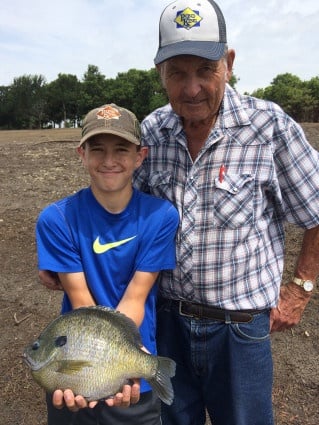The Coppernose is a subspecies of bluegill native to extreme southeast United States. It is now commonly stocked in ponds throughout the south. Coppernose bluegill look similar to native bluegill, however the Coppernose can be identified by the copper colored band around the nose.
They also have similar diets consisting of insects, crustaceans, and other aquatic invertebrates. Bluegill have small mouths which limit them to a diet of small meals. However, they can consume small fish, including juvenile largemouth bass.
This is the main reason not to stagger your bass stocking too long after your forage stocking. Life span is around five years for both native and coppernose bluegill. Coppernose bluegill have a story comparable to the Florida largemouth bass and in warmer climates, including Texas, Coppernose bluegill thrive.
Research conducted in Texas suggests Coppernose bluegill grow faster and reach a larger ultimate size than native bluegill. The largest bluegill taken from private water in Texas was 3.25 lbs. Many times we recommend supplementally feeding the bluegill to get a good number larger than 10 inches, which gives you a protected broodstock.
Because Coppernose grow faster and get bigger they will produce more offspring than native bluegill. One female bluegill can produce more than 10,000 eggs per spawn. This is why they are stocked as the primary component of the food chain to support largemouth bass. Bass have to eat 10 pounds of bluegill to gain a single pound in weight.
Coppernose bluegill will serve a dual purpose in your pond or lake. Not only are they fun and often easy to catch, they are the backbone of the food chain. They spawn shortly after bass in water temperatures from 67°F to 89°F and can spawn up to five times a season. Also, they mature to spawning capability at only three to four inches. Bluegill spawned early in the season will mature and begin spawning later the same season. Early maturity and frequent reproduction make them an ideal forage fish, and a necessity to grow trophy largemouth bass.
Happy Fishing!
Brad Metzler, President



